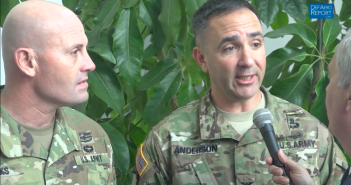
French Navy Chief on Seapower Trends, Fighting ISIS & Interoperability
Adm. Christophe Prazuck, chief of the French Navy, on international seapower trends, counter-terror operations and interoperability. Prazuck was among the navy and coast guard leaders from more than 110 nations attending the 22nd International Seapower Symposium Sept. 21-23 at the US Naval War College, Newport, R.I.









